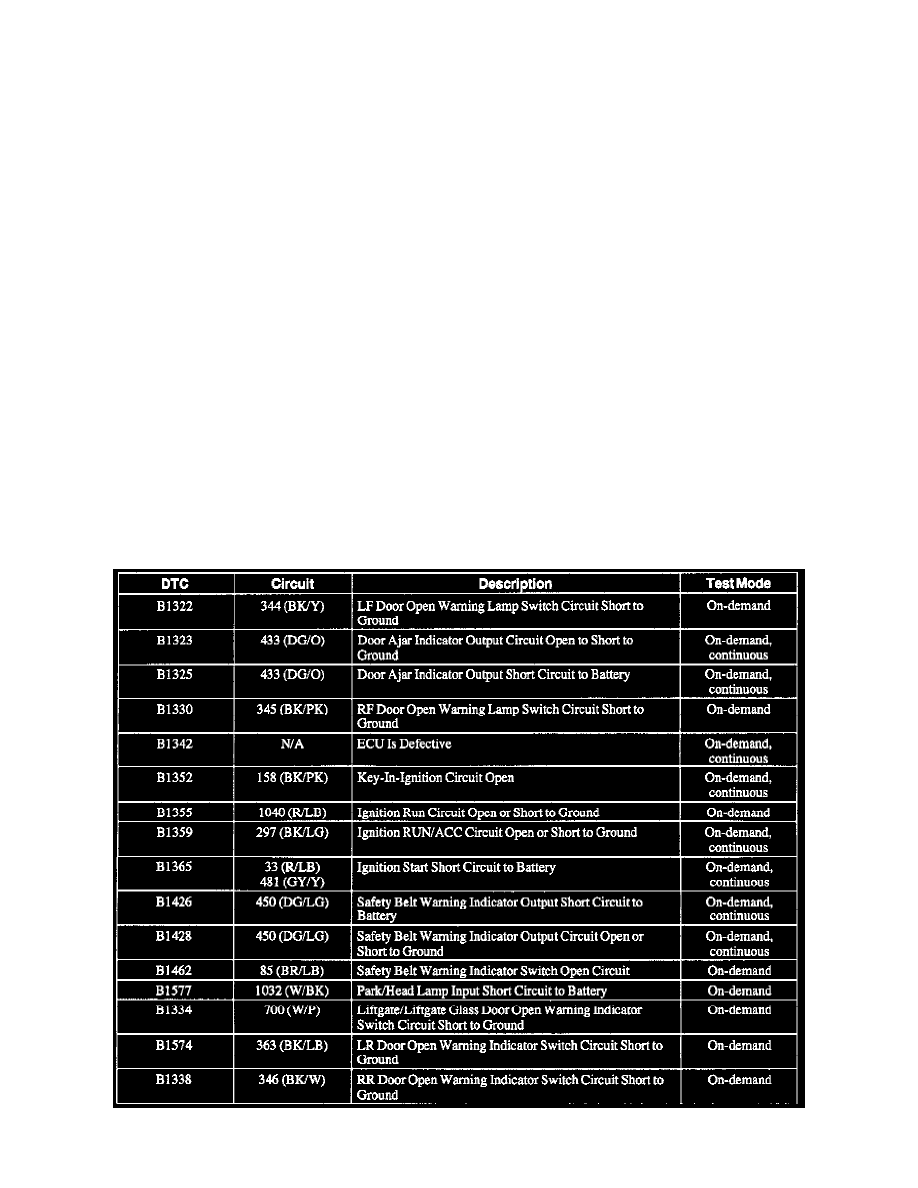Expedition 2WD V8-281 4.6L VIN W EFI (1997)

Audible Warning Device: Testing and Inspection
Flow of Diagnosis
1. Verify the customer's original concern.
2. If the inspection reveals an obvious concern that can be readily identified, repair as required.
3. Before removing and installing the Generic Electronic Module (GEM) connectors, you must disconnect vehicle power at the battery.
4. If continuous DTCs are recorded and the symptom is not present when performing the pinpoint tests, an intermittent problem may be the cause.
Always check for loose connections and corroded terminals when there is evidence of an intermittent problem. Complete the entire pinpoint test
related to the symptom before replacing the GEM.
5. If the concern remains after the inspection, determine the symptoms and go to the Symptom Chart. See: Symptom Related Diagnostic Procedures
6. When probing the fuse junction panel, power distribution box or connectors, damage will result to the connector receptacle if you use a probe that
is too large for the receptacle.
Initial Inspection and Diagnostic Overview
1. Verify the customer concern.
2. Visually inspect for obvious signs of mechanical and electrical damage.
Mechanical
-
Damaged GEM.
-
Damaged key-in-ignition warning switch.
-
Damaged door open warning lamp switch.
-
Damaged safety belt warning indicator switch.
Electrical
-
Fuse(s).
-
Damaged wiring harness.
-
Loose or corroded connections Circuitry.
3. If the concern is not visually evident, determine the symptom and proceed to the Symptom Chart. See: Symptom Related Diagnostic Procedures
Symptom Related Diagnostic Procedures
